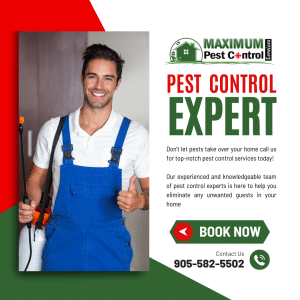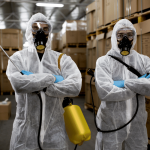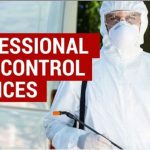
What Does Pest Control House Inspection Entail?
Pest control house inspection is a crucial step for the successful management of any pest infestation. It’s an essential tool for discovering any potential issues before they become detrimental to your home and health. A professional pest inspection will identify how dangerous the current threat may be to you and your family, as well as determine the most effective ways of dealing with it.
A pest control house inspection entails checking all accessible areas in and outside your property like roof space, garden beds, pools, fences and other structural parts that are prone attacks. Additionally, a Pest Control Technician will look out for signs of current or previous infestation from pests such as cockroaches, spiders or rodents – inspecting cracks in walls and any secluded area between objects where pests could be hiding or nesting.
Such inspections also detect food and water sources that may be acting as a lure for insects such as ants or flying pests like mosquitoes. Read on to find out more about what a pest control house inspection may involve.
What is a pest control house inspection?
Pest control house inspection are a crucial process designed to identify, investigate and treat any pest infestation in a home. Pest control technicians thoroughly assess the home inside out looking for signs of pests, such as entry points and damage caused by them. They work with the homeowner to create an effective solution that will get rid of the pests within the shortest time possible.
The purpose of a pest control inspection is threefold: firstly, it helps to detect existing infestations before they cause extensive damage. Secondly, it can find vulnerable spots where pests may enter. Lastly, an inspection serves as a preventative measure against potential future pest issues. A comprehensive assessment not only identifies existing problems but also provides homeowners with adequate information about preventive actions.
The end result of every house inspection should be prescribed treatments or strategies depending on the findings — thereby covering all aspects relevant for successful prevention and removal of pests from home. These long-term benefits far outweigh any short-term inconveniences when it comes to house inspections.
When should you schedule a pest inspection?
Pest inspections should be scheduled regularly to ensure the safety of a home or building. Early detection is key; pest infestations can cause damage and spread disease to both humans and animals. Regular inspections identify potential issues early, allowing corrective action before problems arise.
In residential homes, an annual inspection from a certified professional is recommended. Homeowners should inspect their property seasonally – this might include garages, attics, sheds, and foundations. These zones that have the highest potential for infestation due to warmth and access points such as cracks in walls and behind insulation.
Commercial properties should schedule regular inspections by professionals approximately every three months or when signs of pests become apparent. This allows businesses to take swift corrective action and prevent further infestation. Professional inspections are recommended in facilities that come into contact with foodstuff, e.g. restaurants, health care providers and grocery stores where an infestation could lead to a public health threat.
What types of pests are commonly inspected for?
Pest inspections can help detect and identify an array of destructive or pervasive pests. Common inspections typically look for the following critters:
- Rodents (mice, rats) – These pests are notorious for chewing through insulation, electrical wiring, drywall and other materials that could cause significant damage to a property over time. Also, they can spread disease by leaving droppings throughout the house.
- Termites – Most commonly found in warm humid climates, these insects feast on wood and other cellulose-based products like paper or cardboard, which can not only weaken building supports but also deface furniture, walls or flooring. Note of Attention; We don’t service termites, but we inspect for them!
- Ants – These tiny workers come in large numbers and pose a variety of threats such as poisoning food sources, as well as damaging buildings by creating nests behind bricks walls, leaving mounds of dirt outside entrances and exits in your home.
- Bed Bugs – A detrimental pest often invading homes unnoticed due to their size. They feed on human blood at night when most people are asleep causing bites that result itching welting irritation etc. It’s crucial to isolate these parasites quickly before they infest whole apartments, complexes or even entire neighbourhoods resulting costly treatments.
Ultimately, pest inspections are essential because some pests will remain hidden until there’s an obvious sign of destruction. That’s why knowing what to look for and preventing problems in advance is key.
How long does a pest control house inspection take?
A pest control house inspection typically takes a few hours to complete, depending on the size of the property. The inspector will investigate both inside and outside of the home, going over every inch in search for unwanted guests. It is important that all furniture, carpets and other objects are rearranged or removed so the inspector can get into tight crevices where pests like to hide. Areas inspected usually include attics and crawlspaces, basements, living areas trawling through places around windows as well as walls around pipes.
Inside the home they’ll look under sinks for evidence of rodents or insects; they also check all cupboards and kitchen surfaces such as counters and shelves, looking at gaps between them as those can be primary entry points for various bugs. If signs of termites appear it’s likely that ground excavation may follow to identify further damage from termite invasion/invasion by subterranean species specifically.
Checking the outdoors starts with inspecting gardens and fences, especially wooden structures, as they may be attractive to certain bug types like carpenter ants. Unfortunately, possible colonies can hide inside chewed up wood, which requires a deeper search. Keeping time and persistence is important in performing a pest inspection. Once it’s finished, you’ll receive a report that includes detailed information on any existing infestation, access points that need mitigation or future proofing.
Should I get a pest control house inspection?
Yes, getting a pest control house inspection should be a top priority. Having your home inspected and treated periodically for common household pests is the best way to reduce infestations or prevent them altogether. Moreover, it can also help keep detrimental damage from occurring due to unexpected surprise invasions of bugs and rodents inside walls or other places in your home.
An experienced professional will treat these issues with greater expertise than most individuals might possess on their own. Diagnosing problems correctly and customizing treatments according to local circumstances substantially increases success when ridding an area of unwelcome pests. The specialist does not just employ one solution but rather considers multiple methods including those that are least toxic while still destroying the challenge at hand.
Finally, by hiring Maximum exterminator who offers regular maintenance services through inspections designed for specific seasons, you can have much-needed peace of mind knowing you are doing all you can do protect the health of your family members. You will also preserve property values around you, which reduces risks both socially and financially. Chances are high that they may even come across small issues before evolving into situations beyond control too!
What to look for in a reputable pest control service provider?
When looking for a reputable pest control service provider, the most important factor is that they have to be certified and licensed. A significant amount of research should also be done in order to ensure that they offer quality services that are suitable for individual needs. An experienced team with extensive knowledge regarding pests is also essential.
Another important factor when choosing a pest control service provider is whether their methods are environmentally-friendly. As we strive towards sustainability, it’s critical to find a professional who uses green tactics and solutions as much as possible. Equally, try searching around for opinions on particular firms from fellow customers; due diligence pays well when it comes to protecting both home and business premises from pests!
Finally, by doing your own homework before settling on any one firm – such as comparing prices across multiple companies – you can weed out companies which behave unethically or don’t go above-and-beyond for customer satisfaction. This will help narrow down your shortlist significantly so you arrive at the best option swiftly. It helps if you opt for someone local. Local firms tend to be well-informed about current pest control regulations in your specific area, which gives you an assurance that the job will be done right.
Final Thoughts Why You Should Call Maximum!
A pest control house inspection involves a thorough evaluation of both the interior and exterior environment of any dwelling to detect, identify and eliminate pests. It requires a professional exterminator or certified inspector to investigate all areas of the home from top-to-bottom to determine which kind of pest infestation is present. This means that they look for entry points, places where food may have been left out and other general cleanliness risks.
After the inspection is completed, an extermination plan will be formulated with recommendations on what needs to be done for removal as well as long-term prevention. The exterminator will typically provide preventative advice such as vacuuming regularly behind furniture, caulking cracks in walls, removing excess waste material outside gardens and more. All this helps create an anti-pest environment, thus preventing further invasions by unwanted guests into your living space!





